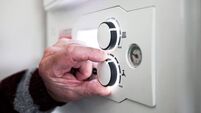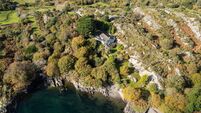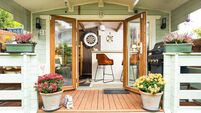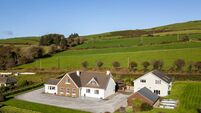Cold facts and uncomfortable truths about retrofitting our homes
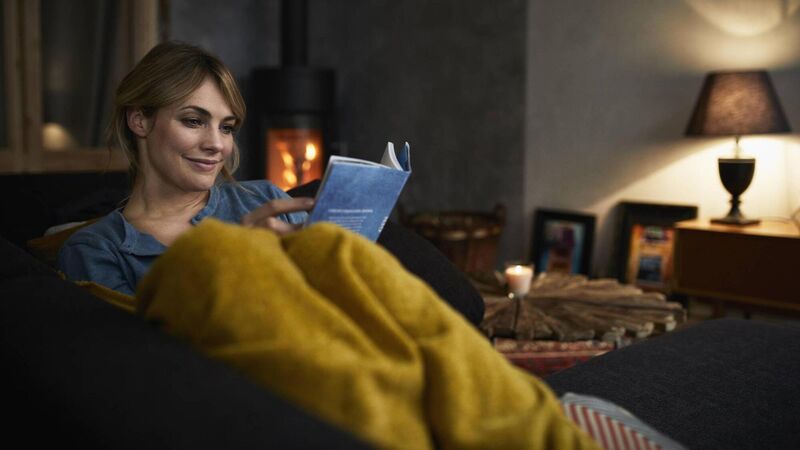
The aim of course is a cosy home that doesn't cost the earth to heat. For older houses, retrofitting could eventually pay for itself in energy savings — but it will certainly involve a significant outlay to begin with. Picture: Getty Images
Where else can one start to act but at home, and with one's personal behaviour? The days and decades of wanton waste and cheap energy are long gone; we’ve gotten wise to the new consensus, cosy or uncomfortable, that it behoves all — corporations, governments, citizens — to act now.
But, at what cost? In my case, it’s in the region of €65,000, for a modest-sized 108sq m (1,150sq ft) older property. Gulp.
That’s before some paybacks from SEAI grants, worth up to €14,000, to get a 100-year-old, cold, stone-built detached home in the coastal countryside up from its current G BER, to a future-proofed, efficient, cosy, and warm B1 BER, fed by a heat pump.
The cold-light-of-day revelation came after a devastatingly insightful and thorough visit and work-through by energy engineer specialist Shaun Finn of Electric Ireland Superhomes. The need, costs breakdown, and schedule came courtesy of an 18-page, tailored, home energy report after a rigorous three-hour inspection by the knowledgeable (and, kind in his comments!) Mr Finn, as part of an Property & Homes trial.
We contrasted the retrofit challenge of two very different house types — Old stone, and modern timber frame (see Kya deLongchamps’ report, below), with a 100-year age gap between them.
Formed last year by Electric Ireland, with the 2015-founded Tipperary Energy Agency, which has extensive experience in heat pumps, Superhomes is one of the country’s burgeoning one-stop shops taking on the challenge of doing deep retrofits on older houses. Government policy is to tackle 35,000 Irish homes by 2030, with Superhomes scaling up itself from 100 homes done so far in 2021 to 650 by 2023.
The scale of the costs so brutally laid bare are salutary, especially given the large gap between what SEAI grants contribute and the costs to private householders.
Whether the Government takes measures in the next short period to help close the gap is as yet a moot point, but Budget 2022 did indicate its priority will be in retrofitting social sector and local authority-controlled homes.
The stark outline of costs to get up to a B1 BER in my case wasn’t entirely unsurprising. After all, the gaff’s over a century old, with a large open fire at its heart, the sort of spot you wouldn’t be too surprised to see Peig Sayers sitting at, puffing on her dúidín, adding to the fug.
That fireplace is in a ‘characterful’ room, in auctioneering-speak, with whitewashed walls, but thankfully is one of the very few uninsulated walls left in the house after slow and steady DIY work over the years, tipping away at insulation and draught-proofing.

Yes, there’s a way to go. Unfortunately, to go an approved retrofit route for SEAI grants, or to score better in any BER assessment, one has to be able to prove insulation levels, so receipts or such are needed without wholesale opening up of walls.
I wouldn’t have minded ripping the walls, to be honest, seeing as the house’s lousy energy efficiency was otherwise being laid bare. In fact, an assessment like this is a bit being asked how your favourite child did in their Leaving Cert? Sure, don’t we love them anyway (and mind your own business!).
Here, the cost of ripping out the 50mm wall insulation/drylining I’d put in piecemeal in most of the house and doing it right with a better system for stone walls, (100mm Isover Optima to give a min U-value of 0.37 W/m2K) was put at €17,250 plus Vat at 13.5%.
Aargh. It was the standout cost in the overall budget breakdown, with external insulation for a small extension adding a further €2,960 plus Vat; redoing attic and sloping roof insulation added another €6,500 or so... At this stage, everything was starting to fog over. This is cold reality all right.
A proper, low-energy loss front door was put at about €2,000 plus Vat, and other necessary improvements to target overall air-tightness levels of 5m3/(h.m2) at q50 came in at €3,000 plus Vat.
Then, after air tightness came demand controlled ventilation (DCV) at €4,500 plus Vat.
Decommissioning the existing oil central heating, removal of tank, boiler, rads, and pipework (the microbore pipes I have won’t suit a heat pump), and replacement with an efficient electric heat pump came to over €17,000, give or take. It allows for a new 6.5kW to 8.5kW air-to-water heat pump, zoned, full controls, and minimum efficiency 350% for space heating and 200% for hot water, making up c €11,000 plus Vat of that overall €17,000 heating sum.

After such big-ticket items, other costs plus some optional items (upgrading 20-year old double glazing for triple glazing, pumped shower instead of instant) entered the expanding ‘I Wishlist’ territory.
Upshot? The total cost to get to a B1 BER was €57,000 before Vat and redecoration, and about €65,000 after Vat. Plus, there’s a Superhomes costs proviso that estimated prices may be plus or minus 15%. Right now, there’s only one direction they are likely to go...
Superhomes says costs typically can range from €25,000 for a smaller home built since 2000 to over €70,000 for older, larger homes, while its average retrofit is €56,000 gross, or €37,000 net of grants.
Currently, quotes such as mine cover work that can be carried out, completed, and certified by a current department deadline March 31, 2022. Despite current construction blockages and shortages — and given that, in my case, most of the work is internal and won’t be overly affected by winter weather — Superhomes energy engineer Shaun Finn reckons I could make it.
Thank you Shaun, but I just might have to get back to you… But you’ve given me masses to think about and to work at in the meantime.
So, is Vat on retrofits an issue for Government to consider? The maximum SEAI grant in my case at present will close off €14,100 + Vat of that, at least.
Will grant levels have to be looked at again? On the evidence and need, and speaking entirely personally, of course, um, yes, they will have to.
Back in the bigger picture, going the one stop shop route where one entity oversees all is absolutely an enormous headache-relief.
Moving any house up from a G BER to a B1 BER or better will add significant value, when and if it is ever put up for sale. Home comfort for occupiers is assured. Heating bills get slashed. But, if there’s a capital outlay of say €50k after grants, it would take decades to recoup in similar older properties.
For older property owners and for owners of older properties, it could be beyond their lifetimes, but, yes, there are future generations (and, the planet) to think of.
Figures and estimated costs courtesy of Electric Ireland Superhomes
- The current BER is a G/493.35 (kWh/m2/yr) in a 108 sq m century+old country property
- Current Heat Loss Indicator 5.58 (W/K/m2). Target is HLI below 2.0 (W/kM2) HLI of 2.0 and 2.30 is acceptable as long as backstop U-values for walls, roof and windows are met.
- Total Estimated Price of Works (ex VAT) €56,955.
- Estimated Price of Works (including VAT) €64,644
- Items excluded from costs: Painting. Tiling, decorating, all builders works, fit out, and works not relating to grant works (unless specifically included).
- Estimated SEAI grant for above is €14,100 (including VAT). Superhomes apply for this grant and pay it on, once works have been completed. The grant offers relate to the remainder of the SEAI 2021 scheme which has a closing date of March 31, 2022.
- Superhomes’ Fees: Survey and Report, €475; Design and Application, €950; Supervision and grant management, €950.
I knew that inviting the Electric Ireland Superhomes team into my house would provide a challenge. I was on edge. The house isn’t cold, structurally failing, or impossible to address. Still, it is (as they discreetly described it) an “anomaly” in the expected trope of Irish builds.
As someone who writes extensively on the topic of deep-energy-retrofits, a full house survey at this forensic level was everything I had wanted for some years. We joke that you could heat this house with an LED lightbulb, but I knew that all was not pert or current in Castle deLongchamps.

A BER carried out in 2019 as an obligation of my photovoltaic grant aid from the SEAI was skinny. The assessor strode through the door and declared mournfully: “Oh, it’s one of these.” Despite open reservations about the build type, the boiler-plate DEAP software result was a sound C1, not bad for the efforts of a rookie, wide-eyed ganger. The BER report floated to point me towards my future goal of a B2, proved to be a boiler-plate edition for a block-build. Timber-frame cannot take external insulation and cavity fill in one elastic bound. I felt a rejecting chill. The report created more questions than it answered. Happily, the SEAI re-launched a new, more extensive BER report mechanism in September.
“One of these” is a timber frame home by Cygnum Timber Frame in Lissarda, Co Cork. Made to my measure, it is heavily insulated throughout the outer envelope and finished in thick feather-board slow-growing larch. With second-fix in 2000 under my fly-by-the-seat-of-the-pants direction after the frame was put up, it was a life-altering, nerve-shredding self-build conducted from a tilted caravan. I threw all the money at the principles of fabric-first, living without carpets, any landscaping, or proper kitchen, and culling aesthetic extras like a soaring fireplace to get in on budget with wide studs, the right wall build out. The result I hoped for was a heavily insulated envelope — floors, walls, and ceilings.
The house reflects my triumphs and errors, and the emerging environmental sensibilities of 2000. Timber frame, dedicated passive solar gain, generous double-glazed elements to the south aspect, and a suspended insulated floor stuffed with 150mm nets of fibreglass. I was the muscled, green goddess of sustainable building.
That assured, smug contentment did not last long.
The evolution of the building regulations (Part L) and the sterling efforts of the SEAI’s domestic grants and, more importantly, their pilot deep retrofit schemes, have goaded us into a tighter, carbon-light build ethos. Passive ‘U’ levels are encouraged, with mechanical ventilation and sustainable heat pump presented as standard. I knew the house was leaky in terms of air exchanges. The dirty little secret of my fossil fuel cooking and heating was sitting out in the kitchen in the form of a 80,000 BTU Stanley Brandon. There were sufficient embarrassments to drop-kick a crucial Heat Loss Indicator (HLI) test into touch.
The survey, carried out by engineer Shaun Finn of Electric Ireland Superhomes, was a very friendly, interactive, positive experience with tons of incidental information throughout. It took a solid three hours (including general nattering), and I was welcome to follow Shaun around. It was the start of an animated, lengthy conversation — not simply a set of figures and results. During this time, I learnt more about the structural character of my highly individual house and its energy performance than I had in 20 years of speculation.

The fabric of the building was thoroughly explored inside and out — every window, door, and visible centimetre, and the current building regulations and SEAI recommendations repeatedly referenced. Getting under the skin of the building was both disappointing and empowering. The BER is a test — this was survey. My tail was wagging despite knowing there was a long way to navigate to a B2, never mind the stellar heights of an A2 as Shaun proposed. The laser focus of these surveys is to get the house “heat pump-ready”. That could be contentious for “anomalous” builds and straitened finances.
Would the survey report just go all-in and ignore lower cost optimal improvements? If I didn’t buy in to the five-figure investment to mountaineer up the BER, would this all be moot? The report and follow-up Zoom meeting, analysing every detail, proved otherwise. The process was through the lens of getting the U values and the HLI suited to the installation of a heat pump. However, there was plenty of highly specific project work outlined, with costings that we felt we could lift and plot going forward to improve our sustainable credits and comfort levels.
I have two roadmaps to an A2. As my house is generally warm and dry, with low heating bills in the area of €700 pa, there’s a commonsense dilemma in signing off on at least €74,000 to tear it up. I’m not 25, and time of life will nuance every homeowner’s decision. Timber-frame houses have their insulation buried on the inside face of the walls.
Please note — if you remember nothing else of my blathering — every time you sink any work into the invisible reaches of your home, have it certified by your contractor and/or a qualified engineer. I don’t have a BER based on 140mm of insulation in every external wall and under the floor because Shaun could not see it and vouch for it.
Because of the material mystery, the backstop numbers for my survey therefore gave me higher U values — dipping my probable BER of B3 (suggested by Shaun) to the official, published C1. This could prove troubling when securing grant assistance where the U values will count to get to the threshold to secure a heat pump grant or allow a potential buyer to purchase with a low-interest green mortgage. It impacted the report too, as the major plan incorporated ripping off plasterboard to insulate walls that are already fattened.

I really appreciated Shaun’s patient manner and generous, technical insight. Our insufficient ventilation measures are being addressed immediately, together with beefing up insulation to the floor of the attic and remote reaches of my open plan pitch. He dubbed the wood double-glazed windows as satisfactory, reminding me kindly that they were end-of-life and that “every house after 20 years will need some reno”.
Changing them out for €8,000-€10,000 won’t improve our BER. Rudely inserting a heat pump without improvements would likely launch us into the As (not recommended and quite rightly not grant-aided).
There’s a curious, but valuable education here.
Figures and estimated costs courtesy of Electric Ireland Superhomes:
- Currently, BER C1 / 171.57 (kWh/m2/yr) or could be (undetermined insulation to walls and floors) B3 / 146.71 (kWh/m2/yr)
- Currently Heat Loss Indicator (HLI) 2.88 (W/K/m2) or could be 2.46 (W/K/m2)
- With full measures will reach A2 (29.46 kWh/m2/yr) qualifying for heat pump grant. €73,624 (+/- 15% inc.VAT) ex. all builders’ works. SEAI grant aid: €3,750
- Without insulating walls/floors and no qualifying for SEAI heat pump grant would also reach A2 (42.46 kWh/m2/yr) and the HLI would be 2.43. €38,779. (+/- 15% inc.VAT) ex. all builders’ works.
- Superhomes’ fees: Survey & Report (€475), Heat Pump Assessment (€250), Tender and contracting for works (€375).
CLIMATE & SUSTAINABILITY HUB



